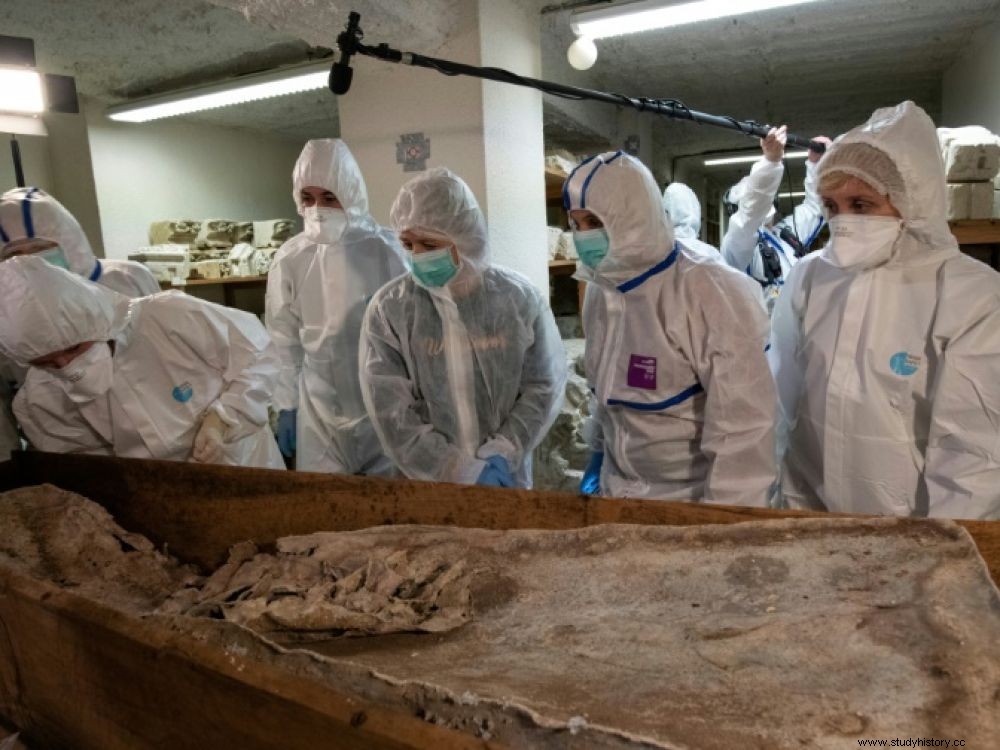After several months of interruption, due to the Covid-19 health crisis, a team of specialists resumes Monday, September 14, 2020 its investigations in the basement of the Aquitaine museum in Bordeaux to try to identify what could well be Montaigne's body.

Photo provided by Bordeaux City Hall on November 19, 2019 of scientific experts examining a tomb in the basement of the Musée d'Aquitaine in Bordeaux which may contain the remains of the philosopher Montaigne.
The excavations resume! After several months of interruption, due to the Covid-19 health crisis, a team of specialists resumed their investigations on Monday September 14, 2020 in the basement of the Aquitaine museum in Bordeaux to try to identify, in the reserves, what could well be the body of Montaigne, the great humanist of the XVI th century. "We are going to resume the investigation where we left off before confinement, this time by opening a lead coffin which could well contain the bones of the philosopher ", explains Hélène Réveillas, archaeologist at the Center for Preventive Archeology of Bordeaux Métropole, head of the scientific team.
A mode of burial practiced in the 16th century
The small anonymous building, which could well be the tomb of Montaigne, had been spotted in 2018 by Laurent Védrine, then new director of the Museum of Aquitaine, after decades of oblivion. A first scientific operation carried out in November 2019 had made it possible to discover the presence of an oak coffin there "perfectly preserved then that of a second coffin – lead this time – right inside this one. The mission was then interrupted, the time for the scientific team to call on Michel Pernot, director emeritus at the CNRS. This paleo-metallurgist, specialist in this material, will be the first to intervene during this new phase of the excavations in order to proceed with the delicate opening of the coffin. "This mode of burial was practiced in the 16th century in the wealthy category of the population because it allowed better preservation of the bodies ", continues Hélène Réveillas.
The skeleton is already visible
The researchers already know that they will find a skeleton there, which is visible through openings due to erosion:"The lead coffin, quite damaged in its lower part, reveals the bones legs. The rest being intact, we are hopeful to find the bones in very good condition “, explains Hélène Réveillas. Many specialists –archaeo-entomologist, paleogeneticist…– will follow one another during this week of excavations with the hope of identifying the famous author of the Essais .
